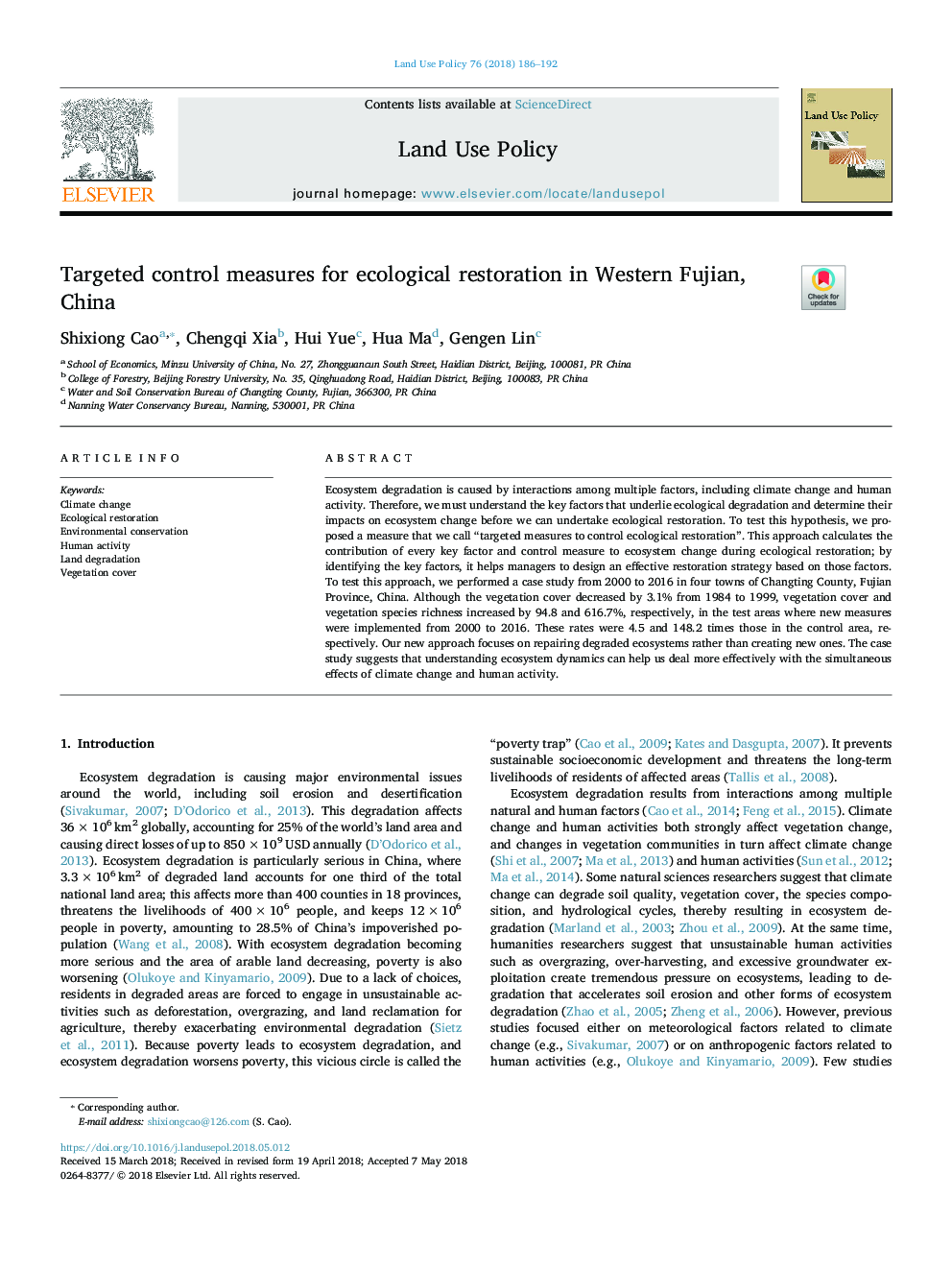| Article ID | Journal | Published Year | Pages | File Type |
|---|---|---|---|---|
| 6546252 | Land Use Policy | 2018 | 7 Pages |
Abstract
Ecosystem degradation is caused by interactions among multiple factors, including climate change and human activity. Therefore, we must understand the key factors that underlie ecological degradation and determine their impacts on ecosystem change before we can undertake ecological restoration. To test this hypothesis, we proposed a measure that we call “targeted measures to control ecological restoration”. This approach calculates the contribution of every key factor and control measure to ecosystem change during ecological restoration; by identifying the key factors, it helps managers to design an effective restoration strategy based on those factors. To test this approach, we performed a case study from 2000 to 2016 in four towns of Changting County, Fujian Province, China. Although the vegetation cover decreased by 3.1% from 1984 to 1999, vegetation cover and vegetation species richness increased by 94.8 and 616.7%, respectively, in the test areas where new measures were implemented from 2000 to 2016. These rates were 4.5 and 148.2 times those in the control area, respectively. Our new approach focuses on repairing degraded ecosystems rather than creating new ones. The case study suggests that understanding ecosystem dynamics can help us deal more effectively with the simultaneous effects of climate change and human activity.
Keywords
Related Topics
Life Sciences
Agricultural and Biological Sciences
Forestry
Authors
Shixiong Cao, Chengqi Xia, Hui Yue, Hua Ma, Gengen Lin,
